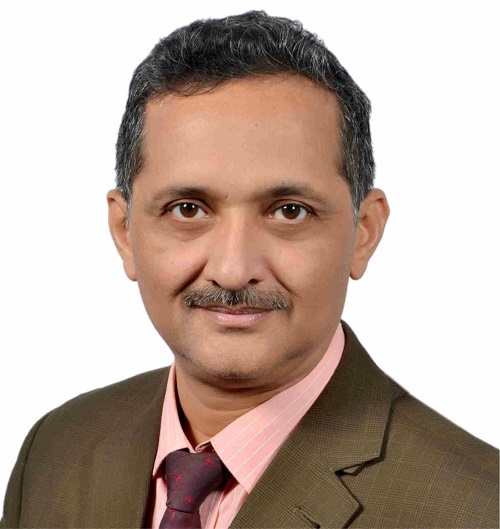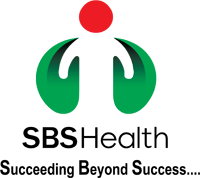What is Commando Surgery - Procedure Steps, Risks, Recovery

Treatment Duration
4 Hours
------ To ------5 Hours
Treatment Cost
₹ 60,000
------ To ------₹ 1,20,000

Table of Contents
Combined Mandibulectomies and Dissection Operation (COMMANDO) surgery is an intensive surgery performed to treat the intra-oral tumour. There are several surgical approaches available to perform COMMANDO surgery. The type of surgery depends upon several factors, such as size and location of the lesion, distance from the mandible, prior irradiation of the mandible, mandible height, level of exposure to the surgical field, and dentition existence.
|
Surgery Name |
Combined Mandibulectomies and Dissection Operation Surgery |
|
Alternative Name |
COMMANDO Surgery |
|
Disease Treated |
Tumours of tonsils, Buccal mucosa, Mandible, Tongue, Floor of the mouth and Gingiva |
| Benefits of the Surgery | Removal of Tumour |
|
Treated By |
Oral and Maxillofacial Surgeon |
You can check Commando Surgery Cost here.
Conditions treated with Combined Mandibulectomies and Dissection Operation Surgery
- COMMANDO surgery is performed to resect the primary intra-oral lesions.
- The surgery is usually performed to remove the malignant tumours near the mandible or involve the mandible.
- A COMMANDO surgery is an effective surgery in removing the malignant lesions in case of head and neck cancers and preventing them from spreading.
Expert Doctors (10)
NABH Accredited Hospitals (10)


How is COMMANDO Surgery performed?
The COMMANDO surgery is performed through the following steps:
- The surgeon initiates the administration of broad-spectrum antibiotics one day before surgery to reduce the risk of infection due to the microbes present in the intra-oral cavity.
- The doctor makes a Y-type incision to have a better visualisation. The incision is not used in the area where extensive radiotherapy is delivered during the prior treatment.
- The surgeon usually initiates the surgery with neck dissection and moves towards the mandible and mouth floor.
- The surgeon makes the radical segmental excision as minimum as possible to reduce the blood loss, magnitude of surgery, functional deficit, and disfigurement.
- The surgeon may use one of the several techniques of hemimandibulectomy and partial mandibulectomy, depending upon the location and size of intra-oral lesions.
- A more significant mandible segment is removed if the lesion is posteriorly located. It allows the surgeon to view the lesion more clearly and remove it effectively.
- The surgeon may also perform a temporary tracheostomy because many patients may develop severe swelling during the surgery that may obstruct the air passage.
- If the patient also has tongue cancer, the surgeon may remove the complete or partial tongue (a process known as glossectomy), depending upon the extent of the disease.
What to expect before and during the COMMANDO Surgery?
Before the COMMANDO Surgery
- Once the doctor decides that the patient has malignant lesions inside the oral cavity and these are to be removed through the COMMANDO surgery, the patient may undergo a pre-anaesthetic check-up.
- The doctor may also seek detailed information about the patient’s medical and lifestyle and prior treatments for malignant lesions. The doctor may also provide the tentative surgery date subject to the outcomes of PAC. The hospital staff communicates the final date of the surgery to the patient via telephone.
- The surgery is done under general anaesthesia.
- The doctor may recommend the patient stop eating or drinking at least 8-10 hours before admission to the hospital. The hospital administration looks after the patient's diet after access under the surgeon's guidance.
- The patient is asked to stop taking those medications that increase the risk of bleeding during or after surgery, such as aspirin, warfarin, or NSAIDs.
- The surgeon will also provide detailed information about the procedure of the surgery and its possible outcomes. The doctor will also inform the patient about possible facial disfigurement or reduced functional capacity of specific organs. The surgeon also provides options, such as reconstructive and plastic surgery, to minimise the disfigurement.
- The total cost, including the hospital stay charges, surgery charges, and insurance formalities, are explained in detail to the patients.
On the day of COMMANDO Surgery
- The surgeon advises you to get admitted to the hospital 1-2 days before surgery. The surgeon will initiate the antibiotic therapy 24 hours before surgery.
- Once you reach the hospital, you will have to complete the hospital formalities. The person accompanying you may sign the consent form and pay the required amount to the hospital.
- You must leave jewellery and other valuable items at home while visiting the hospital for surgery.
- Consent formalities from the patient as well as the next of kin, if needed
- The staff will once again check your eligibility to undergo anaesthesia. It is essential to avoid any complications related to anaesthesia.
- The staff will check your vitals, such as heart rate and blood pressure.
- If you need to take medicine, you may take it with one to two sips of water.
- The staff then shifts you to the general ward or a private room, as opted.
- On the day of the surgery, the staff will take you to the operation theatre.
During the COMMANDO Surgery
- The patient is instructed to lie on his back.
- The staff inserts the intravenous line to administer the antibiotics and pain-relieving medications.
- The anaesthetist gives general anaesthesia to the patient.
- The paramedical staff cleans the surgical site and prepares it for surgery.
- The patient's vitals, such as oxygen saturation, blood pressure, and heart rate, are monitored throughout the surgery.
- The surgeon then performs the surgical procedure.
What to expect after the Surgery?
After the COMMANDO Surgery
- The patient is shifted to the recovery room after the surgery. Once the patient's vital parameters are controlled and stable, the patient is moved to the general ward.
- The patient may have significant pain after the surgery. The surgeon may manage it by delivering multimodal analgesia. The surgeon may also prescribe antibiotics to reduce the risk of infection.
- The patient is discharged from the hospital within 5-7 days after the surgery, depending upon the extensive nature of the surgery.
- The surgeon and hospital staff provide detailed instructions about taking care at home.
- Many patients experience difficulty in swallowing after the surgery. The doctor may insert a feeding tube directly, delivering the food into the stomach.
- Once the patient has no difficulty swallowing, the tube is removed.
- The caretakers should ensure that the patients take a healthy and nutritious diet to recover early.
- The patient's speech may be impaired for some time after the surgery. It will gradually improve during recovery. To accelerate the recovery, the patient may take the services of a speech therapist.
First Follow-up Appointment
- The surgeon may advise the patient to visit the hospital for a follow-up after the surgery.
- It is essential not to miss any follow-up visits, especially for life-threatening diseases like cancer.
- The first follow-up appointment would be seven days after the COMMANDO surgery.
- During the follow-up visit, the doctor will evaluate the recovery and determine any signs of infection.
- The doctor may also ask about the level of pain you are experiencing.
- The surgeon will also discuss the biopsy results and further treatment strategies if required.
When is consultation with the doctor needed?
COMMANDO surgery is an extensively invasive surgery, and the patients may experience several post-surgical complications.
- The patient mustn't ignore these symptoms and consult with the doctor as soon as possible.
- The patient should not wait for the follow-up visit date for these symptoms.
- Some of the complications after the COMMANDO surgery are:
- Bleeding
- Infection
- Loss of functional ability
- Hematoma
- Pain
- Swelling and abscess formation
- Disfigurement
- Pathological fracture
- Neurological complications
Risks of delayed COMMANDO surgery
- COMMANDO surgery is generally performed to manage the tumours the of tonsils, buccal mucosa, mandible, tongue, the floor of the mouth, and gingiva.
- It is generally performed to treat first-degree malignancy. It is, thus, necessary to perform the COMMANDO surgery as soon as possible if the oncology surgeon recommends it.
- Delay in the surgery may lead to the spread of cancer to other nearby or far organs resulting in the requirement of more extensive treatment strategies and reduced chances of survival.
Cost of the Surgery
The cost of COMMANDO Surgery ranges from ₹60,000 to ₹1,20,000. The cost varies based on the following factors:
- Type of COMMANDO surgery
- Age of the patient
- The medical condition of the patient
- The type of hospital facility availed - individual room or shared.
| Procedure Name | Cost Value |
| COMMANDO Surgery | ₹60,000 to ₹1,20,000 |
More Treatment options
Last Updated on: 26 November 2022
Author
HexaHealth Care Team
HexaHealth Care Team brings you medical content covering many important conditions, procedures falling under different medical specialities. The content published is thoroughly reviewed by our panel of qualified doctors for its accuracy and relevance.
Latest Health Articles
Other Treatments in Your City
























